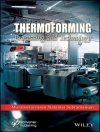This book reflects the increasing interest among the chemical synthetic community in the area of asymmetric copper-catalyzed reactions, and introduces readers to the latest, most significant developments in the field.
The contents are organized according to reaction type and cover mechanistic and spectroscopic aspects as well as applications in the synthesis of natural products. A whole chapter is devoted to understanding how primary organometallics interact with copper to provide selective catalysts for allylic substitution and conjugate addition, both of which are treated in separate chapters. Another is devoted to the variety of substrates and experimental protocols, while an entire chapter covers the use on non-carbon nucleophiles. Other chapters deal with less-known reactions, such as carbometallation or the additions to imines and related systems, while the more established reactions cyclopropanation and aziridination as well as the use of copper (II) Lewis acids are warranted their own special chapters. Two further chapters concern the processes involved, as determined by mechanistic studies. Finally, a whole chapter is devoted to the synthetic applications.
This is essential reading for researchers at academic institutions and professionals at pharmaceutical or agrochemical companies.
表中的内容
Introduction
THE PRIMARY ORGANOMETALLIC IN COPPER-CATALYZED REACTIONS
Scope and Introduction
Terminal Organometallics Sources Available
Coordination Motifs in Asymmetric Copper Chemistry
Asymmetric Organolithium-Copper Reagents
Asymmetric Grignard-Copper Reagents
Asymmetric Organozinc-Copper Reagents
Asymmetric Organoboron-Copper Reactions
Asymmetric Organoaluminium-Copper Reactions
Asymmetric Silane and Stannane Copper-Promoted Reagents
Conclusions
COPPER-CATALYZED ASYMMETRIC CONJUGATE ADDITION
Introduction
Conjugate Addition
Trapping of Enolates
COPPER-CATALYZED ASYMMETRIC CONJUGATE ADDITION AND ALLYLIC SUBSTITUTION OF ORGANOMETALLIC REAGENTS TO EXTENDED MULTIPLE-BOND SYSTEMS
Introduction
Copper-Catalyzed Asymmetric Conjugate Addition (ACA) to Polyconjugated Michael Acceptors
Copper-Catalyzed Asymmetric Allylic Substitution on Extended Multiple-Bond Systems
Conclusion
ASYMMETRIC ALLYLIC ALKYLATION
Introduction
Nucleophiles in Enantioselective Process Development
Functionalized Substrates
Desymmetrization of meso-Allylic Substrates
Kinetic Resolution Processes
Direct Enantioconvergent Transformation
Conclusion and Perspectives
RING OPENING OF EPOXIDES AND RELATED SYSTEMS
Introduction
Copper-Catalyzed Asymmetric Ring Opening of Epoxides with Amines
Copper-Catalyzed Asymmetric Ring Opening of Epoxides and Aziridines with Organometallic Reagents
Copper-Catalyzed Asymmetric Ring Opening of Heterobicyclic Systems with Organometallic Reagents
Conclusions
CARBON-BORON AND CARBON-SILICON BOND FORMATION
Introduction
C-B Bond Formation Reactions
C-Si Bond Formation Reactions
Summary
Cu H IN ASYMMETRIC REDUCTIONS
Introduction
Asymmetric Conjugate Reductions
Asymmetric 1, 2-Additions
Heterogeneous Catalysis
Conclusions and Perspectives
ASYMMETRIC CYCLOPROPANATION AND AZIRIDINATION REACTIONS
Introduction
Asymmetric Cyclopropanation
Asymmetric Aziridination
Conclusion
COPPER-CATALYZED ASYMMETRIC ADDITION REACTIONS OF IMINES
Introduction
Copper-Catalyzed Asymmetric Addition Reaction of Dialkylzinc to Imines
Copper-Catalyzed Asymmetric Allylation, Arylation, and Alkynylation Reactions of Imines
Copper as a Lewis Acid Catalyst for Asymmetric Reaction of Imines
Conclusions
CARBOMETALLATION REACTIONS
Introduction
Carbometallation of Cyclopropenes
Carbometallation of Alkynes
Summary
CHIRAL COPPER LEWIS ACIDS IN ASYMMETRIC TRANSFORMATIONS
Introduction
Cycloadditions
Claisen Rearrangements
Ene Reactions
Nucleophilic Addition to C=O and C=N Double Bonds
Conjugate Additions
Alpha-Functionalization of Carbonyl Compounds
Kinetic Resolution
Asymmetric Desymmetrization
Free-Radical Reactions
Conclusions
MECHANISTIC ASPECTS OF COPPER-CATALYZED REACTIONS
Introduction
Conjugate Addition
Allylic Alkylation and Substitution
Copper as Lewis Acid
1, 2-Addition to Imines and Carbonyls
Copper Hydride
Cyclopropanation, Aziridination, and Allylic Oxidation
NMR SPECTROSCOPIC ASPECTS
Introduction
Copper Complexes with Phosphoramidite Ligands
Copper Complexes with TADDOL-Based Thiolate Ligands
Copper Complexes with Ferrocenyl-Based Ligands
Conclusion
APPLICATIONS TO THE SYNTHESIS OF NATURAL PRODUCTS
Introduction
Copper-Catalyzed Conjugate Additions in Natural Product Synthesis
Natural Product Synthesis Employing Asymmetric Allylic Alkylation
Asymmetric Copper-Catalyzed Diels-Alder Reactions
Asymmetric Copper-Catalyzed Mukaiyama Aldol Reactions
Other Asymmetric Copper-Catalyzed Aldol-Type Reactions
Asymmetric 1, 3-Dipolar Cycloaddition and Claisen Rearrangement
Catalytic Asymmetric Cyclopropanation
Asymmetric Copper-Catalyzed Conjugate Reductions
Copper-Catalyzed Asymmetric 1, 2-Type Addition Reactions
Miscellaneous Asymmetric Copper-Catalyzed Reactions
Conclusion
Index
关于作者
Alexandre Alexakis is Professor of Organic Chemistry at the University of Geneva, Switzerland. He received his Ph D from Paris VI University in 1975, and following a two-year postdoctoral at Johns Hopkins University, Baltimore, USA, joined the CNRS at Pierre et Marie Curie University, where he was appointed Head of Research in 1985. In 1996 he became a full professor at Pierre et Marie Curie University, before moving to the University of Geneva in 1998. Professor Alexakis is a recipient of the Silver Medal of the CNRS, as well as the Novartis Lectureship Award, and has authored 300 articles. His research focuses on asymmetric synthesis and methodologies, using both metal catalysts, particularly copper reagents, and non-metallic catalysts.
Norbert Krause received his Ph D from the Technical University of Braunschweig, Germany in 1986. After postdoctoral stays at the ETH Zürich and Yale University, he joined TU Darmstadt where he obtained his lecturing qualification in 1993. The following year he moved to the University of Bonn as an associate professor, before taking up his present position as a full professor at Dortmund University of Technology in 1998. He has been a fellow of the Japan Society for the Promotion of Science, a guest professor at the Université Catholique de Louvain, Belgium, the University of California, Santa Barbara, USA, and at the École Supérieure de Physique et de Chimie Industrielles de la Ville de Paris, France. Professor Krause has been on the editorial board of the European Journal of Organic Chemistry between 2006 and 2013. His research focuses on the stereoselective synthesis and transformation of functionalized allenes, taking advantage of coinage metal catalysis.
Simon Woodward is a Professor in Synthetic Organic Chemistry at Nottingham University, UK, and has authored over 120 publications in the areas of organic methodology, organometallic chemistry, and selective/ asymmetric catalysis. He has been Director of both the European Ligand Bank and an International Marie Curie Ph D School in Catalysis of Organic Reactions incorporating the universities of Nottingham, Geneva, Sassari, and Dortmund. Professor Woodward also chaired the European Cooperation in Science and Technology Action D40 in Innovative Catalysis and is a member of related Action CM0903 in Biomass Utilisation. His research group is greatly enhanced by extensive collaboration with over 20 other groups, involved in the selective catalysis of organic reactions, throughout Europe and beyond.












